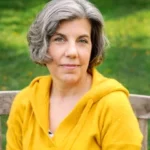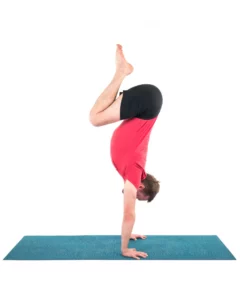Flexibility and Mobility: Why They Matter As We Age

People often come to yoga because they want more flexibility. Of course, I’ve also had people tell me that it’s their lack of flexibility that prevents them from trying yoga. Although flexibility is one of its many benefits, yoga also provides greater mobility, which is important, especially as we age. Lack of mobility can affect your ability to walk, climb stairs, drive, and engage in other tasks of daily living. Poor mobility also increases your chances of falling and sustaining an injury. So, what’s the difference between flexibility and mobility? Is one more important than the other? Read on to find out.
Flexibility and Mobility: What’s the Difference?

The best way to illustrate the difference between flexibility and mobility is to think about how your thumb moves. If you pull your thumb back with your opposite hand so it moves closer to your wrist, you’re employing your thumb’s muscular flexibility. This movement is passive because in order for it to move in this manner, you need to pull on it.
The muscles around your thumb, like all the muscles in your body, have elastic components, much like a rubber band, designed to help the muscle stretch. If you pull both ends of a rubber band and it stretches (as any good rubber band should), it’s flexible. If it doesn’t (and hopefully doesn’t snap, either), it’s inflexible. The same concept applies to the muscles of your thumb. Its ability to move depends on the ability of the muscles to stretch or lengthen.
Now, if you try to move your thumb to that exact same spot on your wrist without the help of your other hand, it most likely won’t move as far. In this scenario, you are engaging your thumb’s mobility. This kind of movement is dynamic and involves actively moving the joint in one or more directions. The ability of a joint to move in multiple directions is referred to as its range of motion (ROM) and can be limited due to injury, surgery, or inactivity.
The Chicken and the Egg: Which is More Important?
It’s probably already obvious to you, but when it comes to flexibility and mobility, one isn’t more important than the other. We need a blend of both.
Mobility allows us to function and move in daily life. It incorporates skills such as balance and coordination and helps preserve muscle, bone, and joint health. Mobility naturally declines with age, so finding ways to maintain good mobility is important.
However, to have good mobility, you also need good flexibility. Flexibility of the muscles and other soft tissues surrounding a joint contribute to its mobility. The loss of flexibility can result in joint stiffness and reduced range of motion. In addition, muscle flexibility helps prevent falls, improves balance, decreases chronic pain, and improves posture. So, believe it or not, it’s possible to be flexible but lack mobility.
We need both flexibility and mobility to stay active and move easily. Happily, yoga fosters both.
Flexibility and Mobility in Action
A well-rounded yoga practice moves the body’s joints through their full range of motion while simultaneously increasing muscle flexibility.
As someone who regularly works with individuals with osteoporosis, arthritis, and other joint issues, I like to start my classes with mobility exercises to warm up the joints before transitioning to flexibility and strengthening poses. To do this, I’ve adapted the Joint Freeing Series (JFS aka Pavanmuktasana) created by Mukunda Tom Stiles, founder of Structural Yoga Therapy. This sequence of 21 poses starts with movements of the feet and ankles and moves upward to the knees, hips, spine, torso, wrist, elbows, shoulders, and neck.
Below is a short, seated mobility practice to get you started.
Also, read...
Yoga and Body Image: How Yoga Can Help You Make Friends with Your Body
Jun 30 – By: Kimber Simpkins
Smooth Transitions: 9 Ayurvedic Tips for Moving into Spring
May 28 – By: Susanna Barkataki
Free Yoga Video: Breathing for Pelvic Floor Health: Two Practices to Deepen Your Breath
May 06 – By: YogaUOnline Staff
Related courses
Breath as Medicine: Yogic Breathing for Vital Aging
With Doug Keller
Yoga and Myofascial Release: Releasing Chronic Tension with the Bodymind Ballwork Method
With Ellen Saltonstall
Yoga and Detoxification: Tips for Stimulating Lymphatic Health
With Lisa Levitt Gainsley

Beverly Davis-Baird, MA, e-RYT200/RYT 500, C-IAYT is a New Jersey-based yoga therapist, writer, and educator. She specializes in making yoga accessible for adults 50+, offering classes and workshops for back care, arthritis, bone health, balance, posture, and healthy aging. An educator at heart with over 20 years of experience as a public school teacher, Beverly brings her knowledge of individual learning styles to her classes, providing instruction that is clear, concise, inclusive, and compassionate. Bringing over 30 years of experience and training, she considers herself a lifelong learner and believes that the practice of yoga should bring spaciousness and release from tension, not create it. As such, she strives to make yoga accessible to people of differing abilities, believing the real benefits of yoga come from what is taken with you outside of class and into your life. To read her blog or learn more about her teaching schedule and latest offerings, please visit www.wisdomtreeyoga.com.
Recent articles
Fascia and the Vagus Nerve: Healing from the Inside Out
Jul 10 – Dr. Arielle Schwartz
Change Your Perspective of Pelvic Tilting: How the Transversus Abdominis Can Help
Jul 08 – Olga Kabel C-IAYT
Warrior I Pose: 5 Strengthening Variations
Jul 02 – Bridget Frederick, eRYT 500
Categories
Upcoming courses
Breath as Medicine: Yogic Breathing for Vital Aging
With Doug Keller
Yoga and Myofascial Release: Releasing Chronic Tension with the Bodymind Ballwork Method
With Ellen Saltonstall
JOIN NOW!
Recent articles
Almost there...
Sorry, we couldn't find anything...
Stress Relief
Fascia and the Vagus Nerve: Healing from the Inside Out
Have you ever had a morning in which you woke up with a painful…
Jul 10 – Dr. Arielle Schwartz
Pose Library
Change Your Perspective of Pelvic Tilting: How the Transversus Abdominis Can Help
“Tuck your tailbone under” or “lengthen your tailbone” have long been among the most…
Jul 08 – Olga Kabel C-IAYT
Yoga Practice Tips
Warrior I Pose: 5 Strengthening Variations
Warrior I Pose (Virabhadrasana I) is an excellent pose for strengthening your whole back…
Jul 02 – Bridget Frederick, eRYT 500





